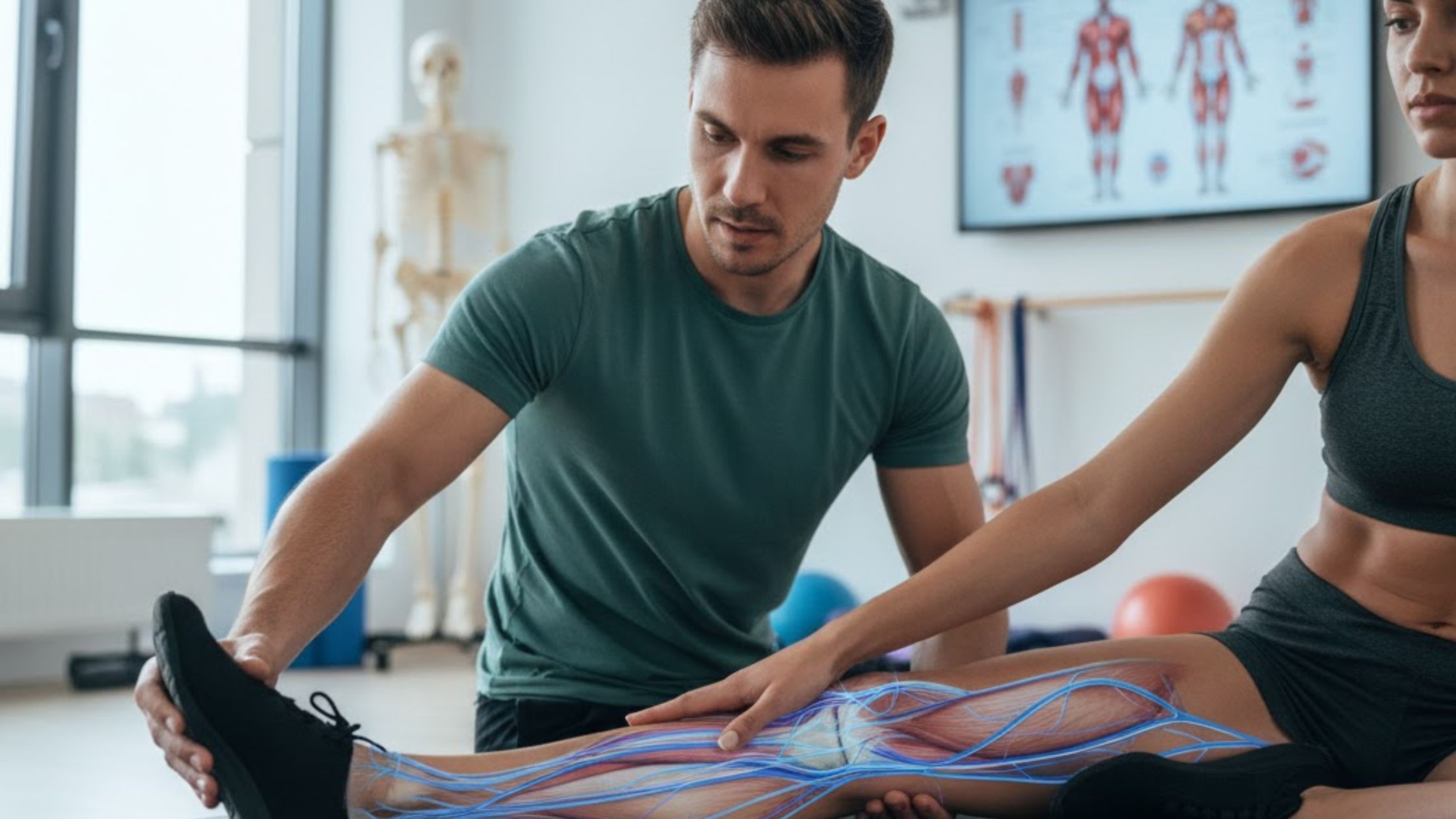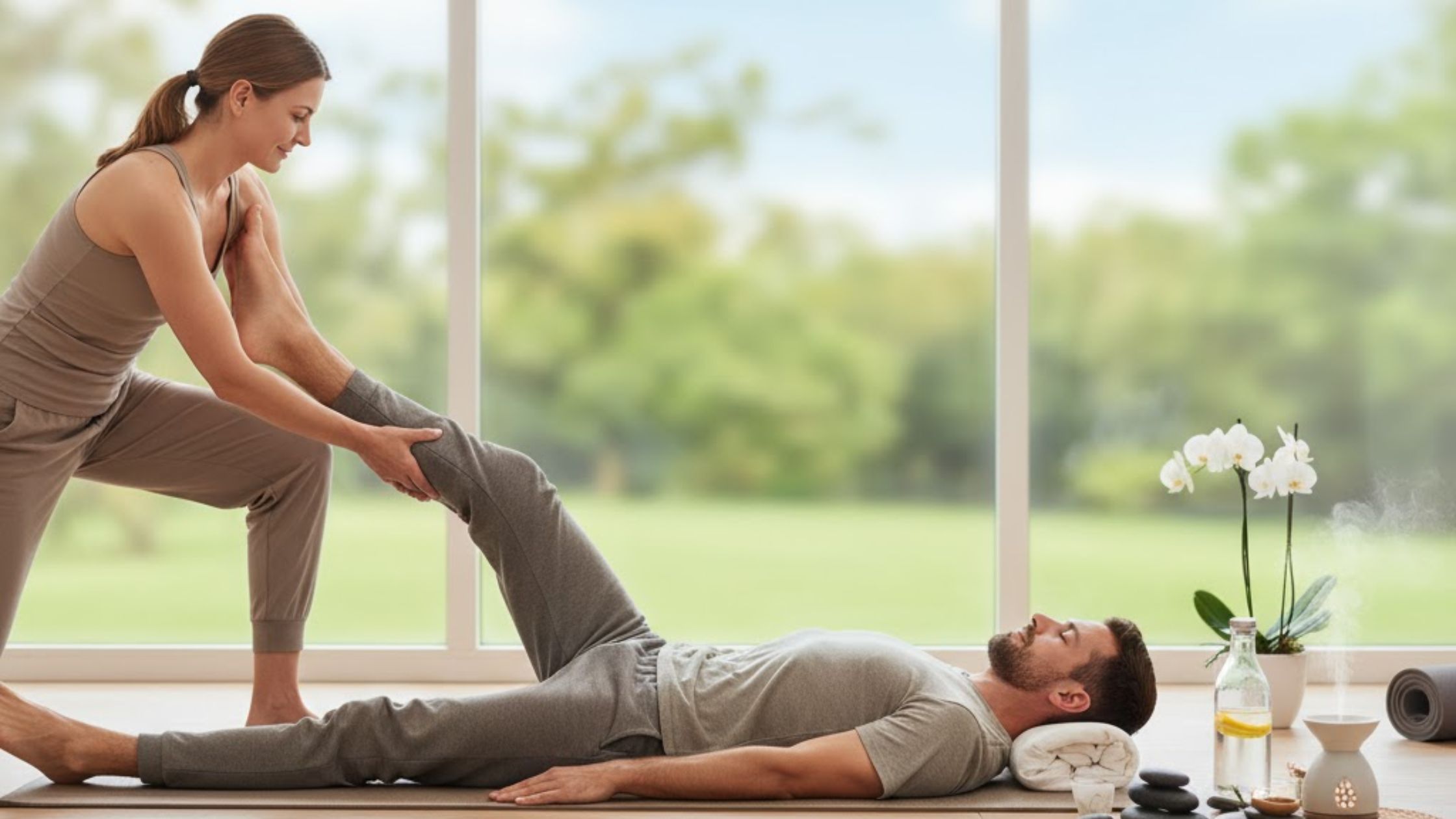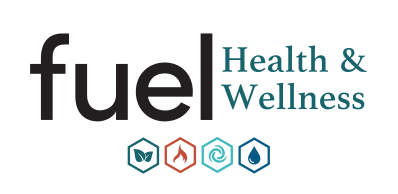Are you seeking a proven method to unlock deeper flexibility, melt away chronic tension, and enhance your athletic performance? While many people focus on their workouts, the critical components of physical maintenance often get overlooked. One powerful tool in the arsenal of modern wellness is Assisted Stretch Therapy, a targeted, one-on-one session with a trained specialist. This modality goes far beyond what you can achieve with self-stretching, using advanced techniques like Proprioceptive Neuromuscular Facilitation (PNF) to safely and effectively increase your body’s range of motion.
However, the efficacy of this professional service hinges significantly on what you do before and after your appointment. Maximizing therapy results is a partnership between you and your practitioner. By adhering to specific preparation and recovery protocols, you can ensure that every session delivers long-lasting improvements. This comprehensive guide, informed by the practices at Fuel Health & Wellness, will walk you through the entire process, turning your stretching appointment from a passive experience into an active catalyst for superior physical well-being.
What Essential Steps Should I Take to Prepare for an Assisted Stretch Therapy Session?

Preparation is the silent component of success in any physical therapy. Just as an athlete warms up before a game, preparing your body and mind before an assisted stretching session is crucial. This pre-stretch preparation maximizes tissue receptivity and allows your therapist to work more efficiently, translating directly into deeper, more meaningful mobility gains. Neglecting these steps can hinder the therapist’s ability to access your true end range of motion.
The preparation phase focuses on three key pillars: physical readiness, hydration, and mental clarity. Addressing these elements ensures that your muscles are pliable, your joints are lubricated, and your nervous system is relaxed enough to accept the deep, targeted work that is about to occur. A successful session begins long before you even step onto the stretching table.
Clothing: The Importance of Unrestricted Movement
The attire you choose significantly impacts the effectiveness of your session. Since assisted stretching involves large, sweeping movements and the manipulation of limbs, restrictive clothing can quickly become a barrier to achieving a deep and thorough stretch. You need to dress in a way that allows for complete, uninhibited movement.
Opt for comfortable, loose-fitting or athletic clothing, similar to what you would wear to a yoga class or gym workout. Yoga pants, athletic shorts, sweatpants, and loose t-shirts are ideal choices because they allow your therapist to move your limbs without encountering resistance from your garments. Avoid wearing materials like denim, clothing with zippers, buttons, or any hard embellishments, as these can be uncomfortable when pressure is applied or when lying on the stretching bench.
Hydration and Nutrition: Fueling the Fascia
Muscle tissue is primarily composed of water, and proper hydration is non-negotiable for flexible, healthy muscles. Dehydrated muscles are stiffer, less pliable, and far more resistant to lengthening, which can limit the depth and benefits of your session. Think of your fascia and connective tissues as sponges; they work best when saturated.
Aim to drink plenty of water throughout the 24 hours leading up to your session. It is also wise to avoid eating a heavy meal immediately before your appointment. While you don’t want to be fasting, having a large meal can divert blood flow to the digestive system, making deep abdominal stretches uncomfortable and potentially causing lethargy. A light, easily digestible snack about an hour before is generally acceptable.
Mental and Physical Warm-Up: Setting the Tone
Arriving at your appointment stressed or with “cold” muscles is counterproductive. While your practitioner will incorporate a brief warm-up, performing light activity beforehand can prime your body. A 5 to 10-minute brisk walk, a light cycle ride, or some gentle dynamic movements can help stimulate blood flow, slightly elevating your core temperature.
Equally important is the mental warm-up. Contact us to ensure you discuss all your goals and any recent changes to your physical routine. Approach the session with a relaxed, open mindset. Deep, controlled breathing exercises in the waiting area can activate your parasympathetic nervous system, signaling to your body that it is safe to relax and release tension during the upcoming stretches.
The Neuromuscular Science of Assisted Stretch Therapy

Understanding why assisted stretching works is key to appreciating its value. It is far more than just pulling on a limb; it is a sophisticated dialogue with your nervous system. Professional therapists leverage anatomical knowledge to temporarily override the body’s protective mechanisms, achieving breakthroughs in flexibility and mobility that self-stretching simply cannot replicate.
The critical difference lies in controlling the stretch reflex. When a muscle is stretched too far or too fast, sensory organs called muscle spindles trigger an involuntary contraction to prevent injury. Assisted stretching techniques, particularly those used by the certified professionals at Fuel Health & Wellness, skillfully navigate this reflex, allowing the muscle-tendon unit to extend further and safely.
Utilizing Proprioceptive Neuromuscular Facilitation (PNF)
The cornerstone of effective professional stretching is often PNF. This advanced technique involves actively contracting the muscle being stretched against resistance, followed by a relaxation phase where a deeper stretch is applied. This sequence exploits a phenomenon called post-isometric relaxation, where the contraction stimulates the Golgi Tendon Organ (GTO), leading to an immediate, profound relaxation of the target muscle.
This systematic application of tension and release is what yields rapid, measurable gains in the length and elasticity of soft tissues. The mechanism is a fundamental reason why many clients experience immediate improvements in their range of motion after just one session. A deeper comparison is often sought, and you can learn more about the scientific differences between PNF Stretching vs. Traditional Assisted Stretch Therapy through dedicated research.
The Role of Fascia and Connective Tissue
Beyond the muscles themselves, assisted stretching profoundly impacts the fascial system. Fascia is the web of connective tissue that wraps around every muscle, organ, and nerve. When fascia becomes tight or restricted—forming what are sometimes called fascial adhesions—it acts like a straitjacket, limiting muscle movement and contributing to chronic pain.
Therapists use specific, sustained pressure and multi-planar movements to target these restrictions. By restoring the natural glide and elasticity of the fascial layer, the muscle underneath is finally able to lengthen fully. This improvement in tissue quality is a huge factor in reducing overall stiffness and enhancing movement fluidity.
Overcoming the Stretch Reflex
The stretch reflex is your body’s natural safeguard. Professional practitioners, however, use stabilization and precise angles to carefully and slowly guide the muscle past this initial barrier. This stabilization prevents the body from cheating the stretch by recruiting other, non-targeted muscles, ensuring that the intended muscle group receives the full therapeutic benefit.
When the therapist stabilizes a joint, the nervous system feels secure, allowing the muscle to “let go.” This controlled manipulation increases the nervous system’s tolerance for the stretch, which is the long-term mechanism behind sustained flexibility improvement. This increased tolerance translates directly into a functional increase in the range of motion in daily life, such as reaching higher or bending further.
Mastering the Post-Session Recovery Tips
The immediate period following your session is arguably just as important as the session itself. Your body has just undergone significant—though gentle—tissue manipulation, and the muscles are highly receptive to change but also potentially vulnerable. Post-session recovery tips ensure the newly gained length is integrated and maintained, preventing regression.
The primary goals of post-session care are to flush metabolic waste, solidify the neural changes achieved, and avoid trauma to the newly lengthened tissues. Think of this period as setting the cement; you must treat your body with care for the next 24 to 48 hours to lock in the mobility gains. Following these steps maximizes your long-term flexibility progress.
Immediate Hydration and Nutrient Replenishment
Drinking water is crucial after the session to help your body process the metabolic byproducts released during the deep stretching. When tight muscles are lengthened, toxins and lactic acid that were trapped can be released into the bloodstream. Increased water intake helps the lymphatic system quickly flush these substances, minimizing post-session fatigue.
Pair your hydration with a nourishing, balanced meal or snack rich in lean protein and complex carbohydrates. Protein provides the building blocks for muscle repair, while carbohydrates replenish glycogen stores, which are necessary for energy and tissue maintenance. Prioritizing this internal recovery helps the muscle fibers adapt to their new, lengthened state.
Planned Rest and Activity Modulation
While you may feel energized and remarkably light after a session, it is critical to avoid intense physical activity for the next 12 to 24 hours. Jumping directly into a heavy weightlifting or high-impact cardio session can compromise the soft tissues that have just been therapeutically lengthened, increasing the risk of strain. Instead, focus on low-impact movement.
Activities such as a gentle walk, swimming, or restorative yoga are excellent ways to keep the blood flowing without stressing the muscles. This low-level movement helps the body solidify the neuro-muscular changes. For athletes, scheduling your session strategically is vital; many find that the Role of Assisted Stretch Therapy in Sports Injury Recovery is best maximized when sessions are placed on active rest days or immediately after low-intensity training.
Recognizing and Responding to Delayed Onset Muscle Soreness (DOMS)
It is common, especially after a particularly deep session or when targeting chronically tight areas, to experience a mild form of DOMS. This should feel like a dull ache or stiffness, not sharp pain, and should subside within 24 to 48 hours. This sensation is a normal signal that change has occurred in the tissue.
If you feel acute pain, you should immediately communicate with your therapist. For typical DOMS, gentle heat (like a warm bath or heating pad) can improve blood flow and ease discomfort. Avoid applying ice, as this can constrict blood flow and slow the necessary recovery process. Furthermore, for those interested in preventative strategies, you can find focused guidance on Injury Prevention for Runners with Stretch Therapy.
Integrating Assisted Stretch Therapy for Holistic Wellness

Assisted stretch therapy is not a treatment solely for athletes; it is a foundational pillar of comprehensive health that benefits every age group and lifestyle. At Fuel Health & Wellness, we view stretching as essential preventative maintenance for the entire musculoskeletal system. The benefits ripple throughout the body, improving systemic functions beyond just flexibility.
From enhancing the performance of elite competitors to making daily tasks easier for older adults, the applications of this therapy are broad and deep. Regular participation leads to synergistic effects that amplify your overall vitality and quality of life. This holistic approach ensures you are treating the root causes of stiffness and discomfort, not just the symptoms.
The Immediate and Cumulative Benefits
| Benefit Category | Short-Term (Immediate) Impact | Long-Term (Cumulative) Impact |
|---|---|---|
| Mobility & Flexibility | Reduced stiffness, increased range of motion during the next 24 hours. | Permanent increase in muscle length and stretch tolerance. |
| Recovery | Flushing of lactic acid, reduction in immediate post-workout tightness. | Significant reduction in the frequency and severity of Delayed Onset Muscle Soreness (DOMS). |
| Pain & Tension | Release of trigger points and immediate relaxation of hypertonic muscles. | Chronic pain mitigation, correction of muscle imbalances, and improved joint function. |
| Mental State | Activation of the parasympathetic nervous system, stress reduction. | Sustained reduction in physical and mental stress markers, improved focus. |
Enhancing Athletic Performance and Recovery
For individuals engaged in sports or intense physical training, assisted stretching is an indispensable performance booster. By improving joint range of motion, athletes can achieve more powerful and efficient movements, such as a longer stride in running or deeper squat depth in lifting. This targeted lengthening allows muscles to generate force across a greater movement arc.
Furthermore, post-exercise sessions accelerate recovery by boosting blood flow to fatigued muscles, delivering oxygen and nutrients crucial for repair. This systemic improvement in muscle health ensures that athletes can maintain a consistent training schedule without being sidelined by persistent tightness or minor strains. Explore the specific advantages in more detail with Assisted Stretching for Athletes and Active Lifestyles.
Addressing Posture and Spinal Health
Poor posture is an epidemic in the modern, desk-bound world, often leading to chronic neck, shoulder, and lower back pain. These issues almost always stem from muscle imbalances: muscles in the front of the body (like hip flexors and pectorals) become chronically tight and shortened, while their opposing muscles become weak and overstretched.
Assisted stretch therapy directly targets these shortened muscle groups, pulling the body back into a more natural, balanced alignment. By lengthening the pectorals, for instance, the shoulders can retract naturally, improving the upright carriage of the spine. Consistent stretching works to correct the physical memory of poor alignment over time. You can read about the long-term changes achieved with Posture Benefits of Assisted Stretch Therapy.
Mitigating Chronic Pain and Stiffness
For many individuals living with chronic musculoskeletal pain, movement is restricted by fear and the constant cycle of tension and spasm. Assisted stretching offers a gentle yet effective way to break this cycle by safely increasing range of motion in tender areas. The guided nature of the session, coupled with the therapist’s expertise, reduces the client’s anxiety about pushing too far.
The therapeutic release of tight fascia and hypertonic muscles often provides profound relief from conditions like chronic lower back pain, piriformis syndrome, and recurring tension headaches. It provides a non-pharmacological, non-invasive method for improving quality of life. Understanding the cautious yet impactful approach is essential for exploring Safe Stretching Options for People with Chronic Pain.
Supporting Sleep and Mental Well-being
The physiological mechanism of deep stretching naturally downshifts the body’s stress response, shifting it from the sympathetic (“fight or flight”) to the parasympathetic (“rest and digest”) state. This profound relaxation effect is not just mental; it has a direct physiological impact.
By releasing deep physical tension, the body is better prepared for rest. Clients often report a significant improvement in sleep quality, noting that they fall asleep faster and experience less restless movement throughout the night. The reduction in physical discomfort and the accompanying mental calmness combine to create an ideal state for restorative rest. Learn more about the profound connection between relaxation and rest in Better Sleep Benefits of Assisted Stretch Therapy.
The Long-Term Benefits of Consistency and Adaptability
Consistency is the single greatest predictor of success in achieving and maintaining lasting flexibility and mobility improvements. While a single session provides immediate relief and temporary gains, the structural and neurological changes that lead to true, sustained range of motion require regular input. The body needs time and repetition to accept and integrate its new resting length.
The frequency of your visits should be tailored to your goals, activity level, and the severity of your current limitations. Beginners focused on general flexibility might start with once-weekly sessions, while competitive athletes or those actively addressing a recurring issue may benefit from two or three sessions per week. A key benefit of working with a professional is the personalized nature of the therapy, which adapts as your body changes.
The Role of Tissue Adaptation and Neuromuscular Reset
Muscle fibers and connective tissues possess viscoelastic properties, meaning they respond to repeated, sustained stretching by gradually elongating and increasing their tolerance to length. Over time, the nervous system also “resets” its baseline, allowing the muscles to relax at a longer length without triggering the protective stretch reflex. This is the physiological basis of long-term flexibility.
To support this adaptation between sessions, your therapist will often provide specific “homework,” usually consisting of gentle, targeted self-stretches or foam rolling routines. Adhering to this prescribed maintenance schedule is paramount to bridging the gap between professional sessions and ensuring that your body continues to integrate the therapeutic changes achieved.
Enhancing Systemic Health: Circulation and Detoxification
Assisted stretching acts as a major booster for the circulatory and lymphatic systems. By compressing and then releasing tight muscle tissue, blood flow is dramatically increased to areas that may have been restricted. This surge in circulation delivers fresh, oxygenated blood and essential nutrients to the muscles and joints, speeding up cellular repair.
This improved circulation also aids the lymphatic system—the body’s waste disposal network—in removing metabolic byproducts and inflammatory agents. This detoxification process contributes to the overall feeling of lightness and revitalization experienced after a session. A deep dive into the systemic advantages can be found by researching the Circulation Benefits of Assisted Stretch Therapy.
Stretching as a Tool for Healthy Longevity
As the body ages, natural processes like the loss of collagen and reduced physical activity lead to decreased flexibility and mobility, which significantly impacts independence and quality of life. Assisted stretch therapy serves as a powerful, low-impact intervention to counteract these effects. It preserves joint function and muscular elasticity, enabling older adults to maintain their active lifestyles.
The gentle, controlled nature of the therapy makes it safe and accessible, even for those with limited physical reserves or chronic conditions. By maintaining functional range of motion in key joints like the hips and shoulders, clients can perform daily activities, such as reaching, bending, and getting up from a chair, with greater ease and reduced risk of falls. Embracing this therapy is a proactive measure for Aging Well with Regular Assisted Stretch Therapy.
Continuous Communication and Program Evolution
Your body is constantly changing based on your stress levels, activity, and sleep quality. Effective assisted stretching requires continuous, open feedback between you and your practitioner. You should always communicate how you feel, where you are tight, and how your previous session impacted your daily movement. This dialogue allows the therapist to adjust techniques and focus areas, ensuring your program evolves with your needs.
This level of personalization is what distinguishes professional stretch therapy from a generic fitness class. At Fuel Health & Wellness, our experts commit to understanding your body’s unique kinetic chain and tailoring every movement. We encourage all prospective clients to meet the team to experience this personalized approach firsthand and understand the depth of their training.
Frequently Asked Questions (FAQ) About Assisted Stretch Therapy
Navigating a new wellness modality often comes with questions about safety, frequency, and efficacy. Here are five of the most common questions our specialists address regarding Assisted Stretch Therapy.
1. How long does it take to see results from Assisted Stretch Therapy?
Most individuals experience an immediate, subjective feeling of reduced tension and increased lightness right after their very first session. However, visible, measurable results in long-term flexibility and range of motion typically begin to appear within four to six weeks of consistent, weekly sessions. True structural change and neuromuscular adaptation are cumulative, meaning results compound over time, making consistency key.
2. Is Assisted Stretch Therapy supposed to be painful?
No, professional assisted stretching should never be painful. It is normal to feel an intense sensation of tension, deep stretching, or minor discomfort as the muscle reaches its therapeutic limit. Therapists work on a communication scale (often 1 to 10) to ensure the stretch remains intense but comfortable, typically aiming for a 7. Sharp or stabbing pain is a sign that you have gone too far, and you should always tell your practitioner immediately.
3. Should I schedule my session before or after a workout?
It is generally recommended to schedule your assisted stretching session after an intense workout. Stretching cold muscles, especially with deep, passive techniques, can slightly increase the risk of strain. Post-workout stretching aids in muscle recovery, helps flush metabolic waste, and locks in the lengthened state of the muscle while it is warm and pliable. If your goal is performance enhancement, a brief, dynamic assisted stretch before a workout can also be beneficial, but the main session is best placed afterward.
4. What is the key difference between assisted stretching and a massage?
While both promote physical wellness, the focus is distinct. Massage therapy focuses on manipulating soft tissues, often using pressure to promote relaxation, break up knots, and improve superficial circulation. Assisted stretching, conversely, is focused on improving flexibility and range of motion by lengthening the muscle-tendon unit and improving joint mobility, primarily interacting with the nervous system. The two modalities are highly complementary and often combined for maximum benefit.
5. Who should avoid Assisted Stretch Therapy?
While safe for most people, there are some contraindications. Individuals with acute injuries (a recent muscle tear, severe sprain, or unhealed fracture) should avoid assisted stretching until cleared by a doctor or physical therapist. People with certain chronic conditions like severe osteoporosis, certain forms of arthritis, or recent joint replacements may need modified or excluded stretches. It is imperative to discuss your full medical history and any injuries with your therapist prior to beginning treatment.
Conclusion: Activating Your Full Mobility Potential
Achieving lasting flexibility and superior mobility is a dedicated process, and Assisted Stretch Therapy is perhaps the most powerful tool for accelerating those results. By taking ownership of your experience through careful pre-stretch preparation—ensuring you are hydrated, wearing appropriate activewear, and communicating your needs—you lay the foundation for a successful session.
Following through with diligent post-session recovery tips, including adequate rest and hydration, is the crucial step that transforms temporary relief into permanent, functional gains. This comprehensive approach, guided by the expert principles championed by Fuel Health & Wellness, ensures that you are not just getting stretched, but optimizing your body’s entire neuromuscular system. By partnering with experienced professionals and respecting the therapeutic process, you can unlock a new standard of movement freedom, recovery speed, and overall physical potential. The time to invest in your mobility is now.


